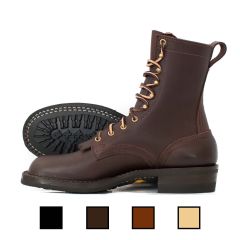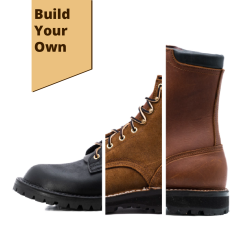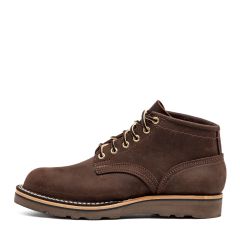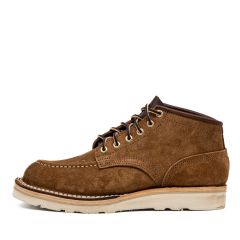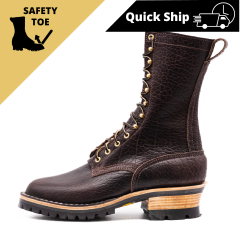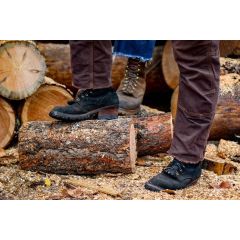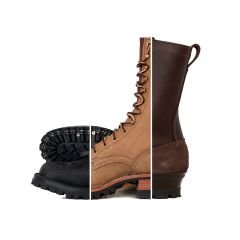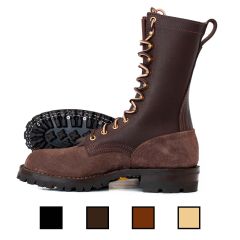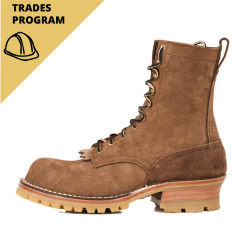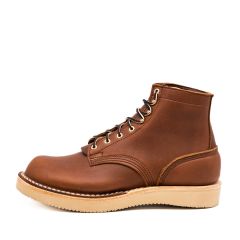Insulated Boots
Insulated Boots: Keeping Your Feet Warm
Insulated boots are designed to provide warmth and comfort in cold weather. They use materials like wool, fleece, or synthetic fibers to trap heat and create a barrier against the cold. The insulation level is measured in grams, indicating how warm the boots will keep your feet.
Waterproof And Comfortable Design
Insulated boots are often waterproof to keep your feet dry in snowy or rainy conditions. Waterproof materials are used to prevent water from seeping in and reducing the insulation's effectiveness.
Breathable For Comfort
Good insulated boots also allow moisture to escape, keeping your feet dry from both external and internal sources. Breathable membranes help regulate temperature and prevent sweat buildup for enhanced comfort.
Durable Traction For Stability
Insulated boots have rugged outsoles with deep lugs for traction on various terrains. The soles are made from flexible materials like rubber to provide stability and grip in cold temperatures.
Choosing The Right Insulated Boots
Consider the insulation level, waterproofing, breathability, and sole design when selecting insulated boots for your specific needs. Understanding these features will help you stay warm and protected during your cold-weather adventures.
Key Benefits Of Wearing Insulated Boots
- Enhanced Warmth And Comfort: Nicks Boots insulated boots provide superior warmth and comfort in cold weather by trapping heat and creating a warm internal environment.
- Protection Against The Elements: Insulated boots offer protection against snow, rain, and slush with waterproof or water-resistant materials, keeping your feet dry and durable in harsh weather conditions.
- Improved Traction And Stability: These boots feature rugged outsoles with deep lugs for excellent traction on ice, snow, and wet surfaces, reducing the risk of slips and falls in slippery conditions.
- Breathability And Moisture Management: Modern insulated boots are breathable, managing moisture effectively to keep your feet dry and comfortable while preventing overheating.
- Versatility In Use: Insulated boots are versatile for various activities like hiking, hunting, and everyday wear in chilly conditions, tailored to different insulation levels and designs for diverse needs.

The Role Of Insulation In Boot Performance
- Warmth And Regulation: Insulation keeps feet warm by trapping body heat, but it should also allow for temperature regulation to prevent overheating
- Weight And Bulk: Insulation adds weight and bulk to boots, affecting mobility. Lightweight materials provide warmth without sacrificing comfort.
- Moisture Management: Effective insulation wicks away moisture to keep feet dry and warm. Waterproof membranes help maintain insulation performance in wet conditions.
- Durability And Longevity: Insulation material quality impacts how well a boot retains heat over time. Choose high-quality insulation for long-lasting performance.
Factors To Consider When Buying Insulated Boots
Level Of Insulation
The higher the grams of insulation, the warmer the boots. Choose 200-400 grams for mild winters and 400+ grams for extreme cold or static activities.
Waterproofing
Look for boots with waterproof materials to keep feet dry. Choosing boots with waterproof materials is essential for anyone working in wet or unpredictable environments. These boots are designed to prevent water from penetrating the shoe, ensuring that your feet stay dry and comfortable throughout the day. This is particularly important not only for comfort but also for foot health, as consistently wet conditions can lead to blisters, fungal infections, and other uncomfortable issues.
Material And Construction
Choose durable materials like leather. Check for sealed seams to prevent water from getting in. Opting for durable materials such as leather when selecting work boots is a wise choice for longevity and protection. Leather is renowned for its ability to withstand tough conditions while offering a degree of breathability, ensuring your feet are protected and comfortable.
This combination of durable materials and construction techniques results in a boot that can endure the rigors of demanding work conditions, safeguarding your feet against moisture, and extending the lifespan of your footwear.
Boot Fit And Comfort
Ensuring a comfortable fit is key when choosing work boots, especially since you'll likely be wearing them for extended periods. Having enough room to wiggle your toes is essential for circulation and comfort, preventing cramping and discomfort throughout the day. If you plan to wear thick socks for additional warmth or cushioning, considering a slightly larger size can help accommodate this extra layer without compromising the fit.
Moreover, boots with cushioned insoles offer enhanced support and shock absorption, crucial for reducing foot fatigue and strain on your joints. These insoles can often be removed or replaced, allowing for personalized orthopedic solutions or refreshing the boot's interior environment for continued comfort and hygiene.
Traction And Outsole
Choosing boots with non-slip, lug soles is crucial for maintaining stability and safety when working in conditions with snow and ice. These soles are specifically designed with deep indentations or patterns to grip onto slippery surfaces, reducing the risk of falls and injuries.
The rugged texture of lug soles bites into softer ground like snow and mud, providing traction that is essential for moving confidently and securely in challenging weather conditions. Additionally, the durable construction of these soles ensures they perform well over time, even in extreme temperatures, making them an indispensable feature for anyone facing winter elements or slippery environments regularly.
Breathability
Selecting boots with breathable linings is essential for maintaining an optimal balance of warmth and comfort, particularly in environments where temperatures can fluctuate. These linings are designed to allow air circulation, helping to regulate the temperature inside the boot to prevent overheating. Additionally, many breathable linings come with moisture-wicking features, which draw sweat away from the skin to the outer layers of the fabric where it can evaporate more easily.
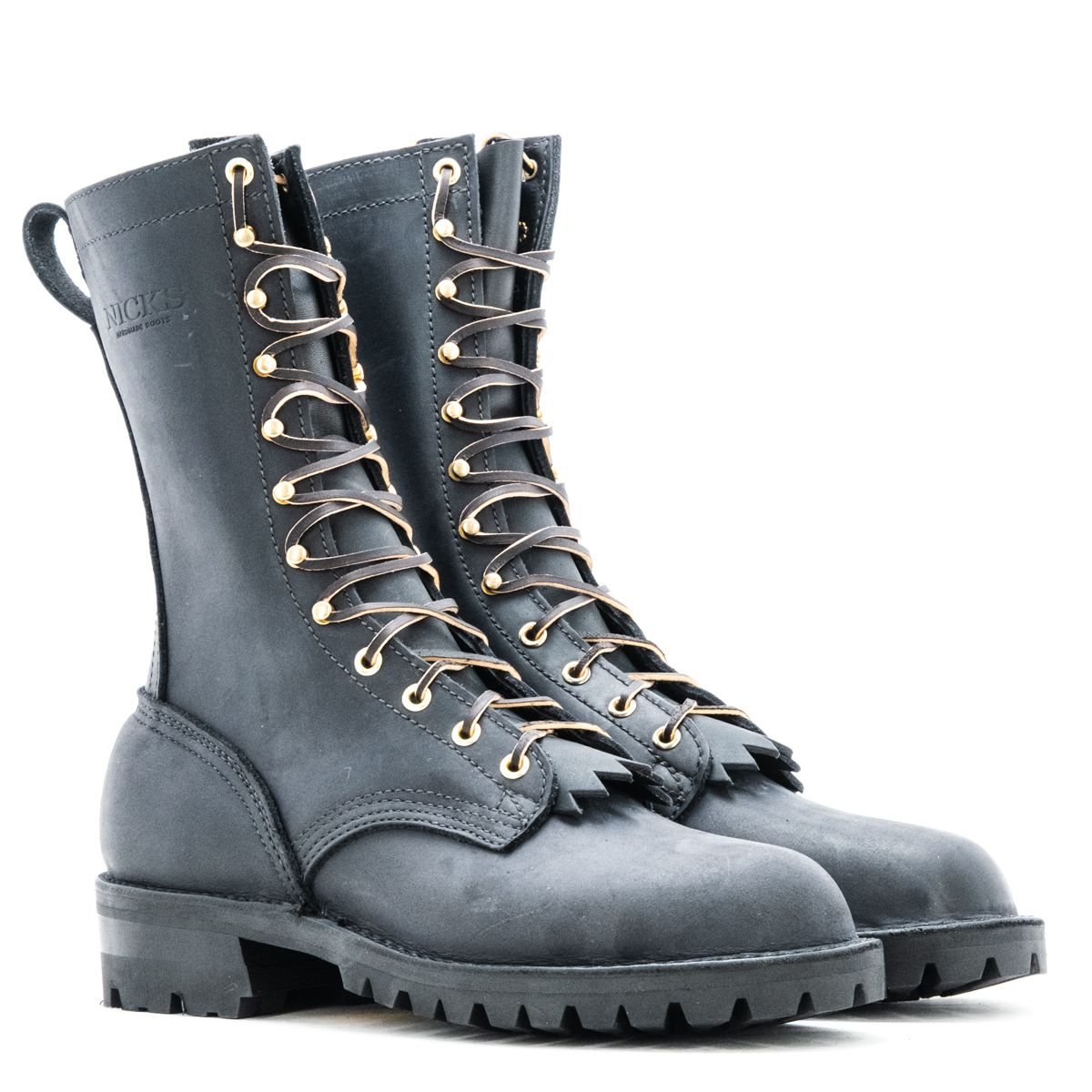
How To Properly Care For Your Insulated Boots
Ensuring your high-quality insulated boots last through many seasons requires proper care and maintenance. Here are some essential tips on keeping your boots in top condition:
- Clean Them Regularly: After each use, especially if you’ve trekked through mud or snow, clean your boots to remove dirt and debris. Use a soft brush or cloth to gently wipe the exterior. For stubborn dirt, use a mixture of mild soap and water, and apply gently with a soft brush or cloth. Avoid harsh chemicals that can damage the boot materials.
- Dry Your Boots Properly: Moisture can damage your boots over time, leading to a breakdown of materials and a decrease in their insulating properties. After cleaning or walking in wet conditions, let your boots air dry away from direct heat sources like radiators or fires. Direct heat can cause the materials to warp or crack. Remove the insoles and open up the boots as much as possible to speed up the drying process.
- Apply Waterproofing Treatments: Even if your boots are made with waterproof materials, applying a waterproofing treatment can enhance their resistance to water and extend their lifespan. Follow the manufacturer’s recommendations on the type of waterproofing product to use, as some treatments are specific to materials like leather.
- Store Them Correctly: When not in use, especially during the off-season, store your insulated boots in a cool, dry place. Avoid storing them in direct sunlight or in damp areas as this can lead to material degradation. Consider stuffing them with newspaper or a boot form to help retain their shape.
- Pay Attention To The Soles: The soles of your boots take a beating from varied terrains. Inspect them regularly for signs of wear and tear. If your boots have removable outsoles, consider replacing them once they’re worn out to maintain traction and comfort.
- Check And Repair Damage Promptly: Regularly inspect your boots for any signs of damage, such as tears in the fabric, loose seams, or leaks. Early detection can mean simpler, more effective repairs. Many manufacturers offer repair services, or you may find a local cobbler can do minor repairs, extending the life of your boots.
- Follow Manufacturer’s Care Instructions: Always refer to the manufacturer’s care instructions provided with your boots. These guidelines are specifically tailored to the boot’s materials and construction, ensuring you don’t inadvertently damage your boots while trying to care for them.
- Proper care and maintenance not only extend the life of your insulated boots but also ensure they continue to perform at their best. By following these simple steps, you can protect your investment and enjoy warm, dry feet, regardless of the weather conditions.
Frequently Asked Questions
What are insulated boots?
Insulated boots are specialized footwear designed to provide enhanced warmth in cold conditions. Unlike regular boots, they are crafted with added layers of insulation material to trap heat and keep the feet warm, even in extremely low temperatures.
How do insulated boots keep your feet warm?
Insulated boots keep your feet warm by trapping a layer of air between your feet and the external environment. This air acts as a thermal barrier, reducing heat loss and maintaining a comfortable temperature inside the boot. The insulation materials further enhance this effect by minimizing the conduction of cold into the boot.
Can insulated boots be waterproof?
Yes, many insulated boots are designed to be waterproof to offer comprehensive protection against cold and wet conditions. Manufacturers often use waterproof materials and seals in the construction of these boots to prevent water from penetrating the insulation and reaching the foot.
How do you measure the insulation value of a boot?
The insulation value of a boot is typically measured in grams, indicating the weight of the insulation material used. Higher numbers suggest more insulation and greater warmth, whereas lower numbers are suitable for milder conditions. The right insulation value depends on the intended use and personal preference for warmth.
What activities are insulated boots good for?
Insulated boots are ideal for a variety of cold-weather activities, including winter hiking, snowshoeing, hunting, fishing, working outdoors, and everyday use in snowy or icy conditions. Their warmth and protection make them essential gear for anyone spending time in cold environments.
How do you clean insulated boots?
To clean insulated boots, first, remove any loose dirt or debris. Use a soft brush and a mild detergent diluted in water to gently clean the surface. Avoid soaking the boots and rinse them with a damp cloth instead. Allow them to air dry away from direct heat sources to prevent damage to the insulation.
Are there insulated boots for extreme cold?
Yes, there are insulated boots specifically designed for extreme cold conditions, offering high insulation values and additional features like thermal insoles and specialized outsoles for enhanced grip on ice and snow. These boots are intended for use in environments where temperatures drop significantly below freezing.
What is the difference between insulated boots and regular boots?
The key difference between insulated boots and regular boots is the presence of additional insulation material in insulated boots, which provides superior warmth in cold weather. Regular boots may not offer sufficient protection against low temperatures and are more suited for milder conditions.
Can insulated boots be too warm?
Yes, insulated boots can be too warm for certain conditions or activities, leading to overheated feet and discomfort. Choosing the appropriate insulation value based on the weather and the intended use is crucial to ensure comfort and prevent sweating, which can lead to cold feet in freezing temperatures.
